Introduction for Uber Case Study:
In 2009 a revolutionary idea was born on the streets of San Francisco.
An idea that will redefine urban mobility and challenge the non-functionality of traditional transportation.
This was the beginning of Uber, a startup that would soon become a popular name across the world.
But how did a simple app achieve such huge success in a relatively short period of time?
And what were the subsequent effects of its unique approach on established industries?
Let’s dive in deeper about the Uber Case Study.

From Humble Beginnings to Global Domination
When Travis Kalanick and Garrett Camp first started with Uber, it was out of a personal need: finding a reliable ride in the city.
Little did they know, this seed of an idea would sprout into a tech giant, now valued at billions.
In its early days, Uber was a luxury service, offering rides in high-end vehicles. But as the company grew, it adapted, monetized, and expanded its services while meeting the needs of a broader audience. UberX, UberPOOL and Uber EATS are just a few examples of how the company continues to innovate to meet the diverse needs of its users.
Unique business ideas: Challenges for Traditional Industries
As Uber began to gain success, it wasn’t just the transportation industry that felt losing customers due to the competition.
Traditional business models across various sectors were suddenly under trouble, being compared to this new, agile approach that Uber represented.
The company didn’t just offer rides; it offered convenience, efficiency, and a user-centric experience, all come in a mobile app that is available on the Google Play Store and Apple Store.
But innovation comes with its unique challenges. Taxi unions, regulators, and even some users were skeptical and, at times, openly hostile to the changes Uber brought.
Cities like London, Paris, and New York saw massive protests, with taxi drivers voicing their concerns about this new player in the market
However, what truly sets Uber apart was its ability to leverage technology and data, continuously refining its services based on customer feedback and behavior.
Business model

What is Uber’s business model? Is it sustainable?
Uber operates under a platform-based business model, often referred to as the “sharing economy” or “peer-to-peer” model.
Here’s a breakdown:
- Platform-based model: Uber acts as an intermediary between drivers (service providers) and passengers (customers). who doesn’t own a vehicle; instead, it partners with drivers who use their own cars.
- Flexible pricing: Uber uses an algorithmic pricing model in which fares can change based on real-time supply and demand. This often happens during peak hours or during unfavorable weather conditions, known as “surge price.”
- Cashless transactions: Payment is made through the app using a credit card and debit card, making the process seamless for drivers and passengers.
- Feedback and Rating system: After each trip, drivers and riders will rate each other. This ensures a level of quality control and trust within the platform.
- Diverse services: Uber has diversified its services over the years.From luxury rides (Uber Black) to economical options (UberX) to carpooling (UberPOOL), it meets a variety of customer needs. In addition, it also expanded into other areas such as food delivery using UberEats.
- Global presence: Uber operates in many cities and countries around the world, adapting to local regulations and market conditions.
Is it sustainable?
The sustainability of Uber’s business model has been a topic of debate for many reasons:
- Regulatory challenges: Uber has faced regulatory hurdles in many cities and countries. Traditional taxi services have protested against Uber, leading to bans or restrictions in certain areas.
- Financial concerns: As of my last update in January 2022, Uber has yet to achieve consistent profitability. Although revenue is significant, the company still spends heavily on promotions, driver incentives and expansion efforts.
- Reputation management: Uber has faced criticism and negative publicity on many fronts, from safety concerns to corporate culture issues. Addressing these concerns is critical for its long-term sustainability.
- Competition: In many markets, local competitors (such as Ola in India, Didi in China, and Lyft in the United States) are challenging Uber. These competitors often have a better understanding of local market and can offer stiff competition.
- Relationship with the driver: Classifying Uber drivers as independent contractors rather than employees has been controversial. Drivers’ desire for better pay and benefits has led to legal battles in some areas.
- Diversification: On the positive side, Uber’s diversification into areas such as food delivery (UberEats) and freight (Uber Freight) could provide additional revenue streams and enhance the company’s sustainability.
Understanding the business

A unique Business model with sharing economic approach – The term “unique” in the business context refers to innovations that significantly change industries and markets, often displacing long-standing, market-leading companies, products, and alliances.
Uber’s business model proves this definition. Instead of following a traditional asset ownership model (like a taxi or fleet), Uber relies on a “sharing economy” approach.
- Sharing economy: At its core, the sharing economy is a social-economic system built around sharing resources. This is usually a platform that makes it easy for you to borrow or rent assets owned by others. In Uber’s case, that means connecting drivers willing to share their personal vehicles with passengers looking for a ride.
- Asset-Light model: One of the main advantages of this approach is that Uber does not incur the costs and liabilities associated with owning a fleet of vehicles. Instead, it focuses on maintaining and improving the platform that connects drivers and riders.
- Win-win scenario: Drivers have the opportunity to work on their terms and earn money using the asset they already own (their car), while riders benefit from convenient and more affordable transportation option.
Need help with Website Development?
Tell us about your project and get a free quote.
A click from the nearest available car
The easy to use and immediate services of Uber are unbelievable in comparison with the traditional taxi industry
With the Uber app:
- Instant access: Users can hail a ride with just a few taps on their smartphone. The application interface displays the number of available vehicles in real time, helping users know the distance of the nearest driver.
- Transparent prices: Before confirming a ride, users get an estimated fare, ensuring there are no surprises at the end of the trip.
- Real-time tracking: Once a ride is booked, users can track the driver’s progress to their location and get an estimated time of arrival.
- Cashless transactions: The entire payment process is managed in the app, eliminating the need for cash and making the end of the ride smooth and hassle-free.
Serves All Age Groups and backgrounds
Uber’s appearance is not limited to a specific demographic. Its user-friendly design and diverse services offering target a wide range of audiences:
- For young and tech-savvy people: The convenience of booking a ride via a smartphone app attracts the younger generation,who are used to digital solutions based on their needs.
- For the elder: Even for those who aren’t tech-savvy, Uber makes an effort to make its platform accessible. Features like the ability to book a ride for someone else or the ability to hail a ride without an app in certain areas are aimed at older users.
- Diverse Service Range: Whether it’s a luxury car service (Uber Black), a economical ride (UberX), or a carpooling option (UberPOOL), there’s something for everyone, regardless of budget or preference. what they like.
- Wide range of services: Uber has also taken steps to ensure its service is inclusive. Features like Uber WAV (wheelchair accessible vehicle) and efforts to provide services to undeserved areas demonstrate their commitment to meeting all walks of life and needs.
Sharing economy business model

Provides Financial and Economic Value
The sharing economy’s primary allure lies in its ability to unlock significant financial and economic value:
- Optimized Resource Utilization: Traditional business models often involve underutilized assets. For instance, a car might sit idle in a driveway for hours or a room might remain vacant in a house. The sharing economy taps into this dormant value, allowing individuals to monetize these underused assets by renting or sharing them.
- Cost Savings for Consumers: By bypassing traditional middlemen and infrastructure costs, services in the sharing economy often provide more competitive pricing. For example, staying in an Airbnb can be cheaper than a hotel, and using platforms like Task Rabbit can offer affordable services compared to established businesses.
- Economic Stimulus: The sharing economy injects money into local economies. Hosts, drivers, or service providers earn directly from their assets or skills, often supplementing their primary income sources.
Want SEO/Digital Marketing Services?
Want to increase traffic and boost sales? Book a Free consultation call with our Expert!
Attracts Investors
The potential and rapid growth of the sharing economy have not gone unnoticed by the investment community:
- High Valuations: Companies operating within the sharing economy, like Airbnb, Uber, and We Work, have achieved multi-billion dollar valuations in relatively short time frames.
- Venture Capital Influx: The innovative nature and scalability of sharing economy platforms have attracted significant venture capital. Investors see the potential for high returns, especially if these platforms can achieve dominant positions in their respective markets.
- Future Potential: As technology continues to evolve and more sectors become ripe for disruption, investors anticipate that the sharing economy model will permeate even more industries, offering further investment opportunities.
Fast Growing Industry
The sharing economy’s growth trajectory has been nothing short of meteoric:
- Rapid Adoption: The convenience, cost-effectiveness, and user-centric design of sharing economy platforms have led to swift adoption rates among consumers. Many people now prefer to hail a ride on Uber or rent a vacation home on Airbnb rather than use traditional services.
- Global Expansion: While the sharing economy began primarily in Western countries, its reach has quickly expanded globally. Markets in Asia, Africa, and South America are experiencing surges in sharing economy platforms tailored to local needs.
- Diverse Sectors: Initially, the sharing economy was most prominent in sectors like transportation and accommodation. However, its principles are now being applied to diverse areas, including finance (peer-to-peer lending), fashion (clothing rentals), and even agriculture (equipment sharing).
Uber’s Financial Value and Revenue:
- 2014: Uber reported a net revenue of $400 million.
- 2015: Uber’s net revenue surged significantly, reaching approximately $2 billion.
- 2016: The company’s growth trajectory continued with a net revenue of around $6.5 billion.
- 2017: Uber’s net revenue reached $7.5 billion, marking a steady increase.
- 2018: The revenue figures for this year stood at approximately $11.3 billion.
- 2019: Uber reported a net revenue of around $14.1 billion.
- 2020: Despite the challenges posed by the COVID-19 pandemic, Uber managed a net revenue of about $11.1 billion.
- 2021: The company’s net revenue rebounded to approximately $15 billion.
- 2022: As of the latest data, Uber’s net revenue is projected to be around $16.5 billion.
Uber Driver Earnings:
- 2014: Drivers could earn up to $20 per hour.
- 2015-2016: The earnings for drivers remained relatively stable, with many reporting earnings in the range of $18 to $25 per hour, depending on the city and demand.
- 2017: Some reports suggested that driver earnings slightly decreased to an average of $17 to $23 per hour.
- 2018: With more drivers joining the platform and increased competition, the average hourly earnings hovered around $16 to $22.
- 2019: Driver earnings saw a slight uptick, with many earning between $17 to $24 per hour.
- 2020: The pandemic impacted driver earnings due to reduced demand, with many drivers reporting earnings of $15 to $20 per hour.
- 2021: As the demand for ride share services began to recover, driver earnings ranged from $18 to $25 per hour.
- 2022: The latest data suggests that drivers can earn anywhere from $19 to $26 per hour, depending on factors like location, time of day, and promotions.
It’s essential to note that these figures are approximate averages and can vary based on several factors, including location, demand, promotions, and individual driver performance.
Attracts Investors:Since its founding,Uber has attracted investors and significant attention from the venture capital community.
Its innovative approach to transportation and rapid growth have made it a top candidate for investment.
- Valuation:Uber’s value has skyrocketed over the years. In 2015, it was valued by investors at a staggering $51 billion, making it one of the most valuable startups in the world at the time.
- High-Profile Investments:Several leading companies soon realized Uber’s potential and decided to invest.These include:
Want to Optimize/Customize your website or App?
Book a Free consultation call with our Expert!
Menlo Ventures:An early-stage venture capital firm that has backed several successful technology companies.
Google Ventures (GV): AlphabetInc’s venture capital arm. (Google’s parent company) has invested in Uber, strengthening its position in the technology industry.
Fidelity:A multinational financial services company saw the potential benefits of Uber’s growth.
BlackRock:Another major global investment management firm has backed Uber.
Fast-Growing Industry:Uber’s impact on the transportation industry is undeniable. Its growth metrics reflect the success and demand for its services.
Daily Trips: According to the latest data, Uber makes an average of 25 million trips per day. This number shows the scale of the company’s operations and the level of trust users have in the company’s services.
Total Trips:Since its founding in 2010, Uber has facilitated 42 billion trips worldwide. This number not only highlights the company’s growth but also its global reach and acceptance.
It’s important to note that while these numbers provide insight into Uber’s growth and investor interest, the company’s journey has been filled with challenges, controversies, and competition.
However, its ability to attract investors and its rapid growth in the industry have highlighted its importance in the sharing economy and the transportation sector more generally.
Type of services from uber
Uber Black:

- Description:Uber Black is the company’s original luxury service. It offers riders a more premium experience than standard services.
- Features:
Vehicle Type:High-end black luxury sedans often come from brands such as Mercedes-Benz, BMW or Audi.
Registration & Insurance:All Uber Black vehicles are commercially registered and insured, ensuring a higher level of safety and professionalism.
Driver Requirements:Uber Black drivers typically have professional driving experience and are expected to provide a higher level of service.
Do you have any Business Idea?
Get a Free Consultation with our expert and get yourself educated on how to make your business successful.
Uber SUV:

- Description:The Uber SUV is similar to the Uber Black but offers a larger vehicle for those who need more space.
- Features:
Vehicle Type:High-end black luxury SUVs like Cadillac Escalades or Lincoln Navigators.
Registration & Insurance:Like Uber Black, all vehicles are commercially registered and insured.
Capacity:Designed to accommodate larger groups or passengers with more luggage.
UberX:

- Description: UberX is Uber’s most popular and standard service, providing affordable rides for everyday use.
- Features:
Vehicle Type:Typical everyday cars, which can range from a Toyota Prius to a Honda Accord. Model year requirements varies by city,but generally it’s a 2000 or newer model (in some cities, 2005 or newer).
Driver Requirements Drivers must have a clean driving record and pass a background check.
Vehicle Requirements:Specific car brands and models are accepted, and vehicles must be in good condition.
Uber XL:

- Description: Uber XL is designed for larger groups, offering vehicles with more seating capacity than UberX.
- Features:
Vehicle Type: Larger vehicles like minivans or SUVs.
Capacity: Can comfortably fit 6 passengers or more.
Pricing: While it’s priced higher than UberX due to the larger vehicle size, it’s still more affordable than the luxury options.
Want to Optimize/Customize your website or App?
Book a Free consultation call with our Expert!
Uber Select:

- Description: Uber Select is a mid-tier luxury service, offering high-end cars without the premium price of Uber Black.
- Features:
Vehicle Type: Luxury sedans and SUVs, but not as high-end as Uber Black or SUV.
Availability: Only available in select cities.
Pricing: Positioned between UberX and Uber Black in terms of pricing.
Uber Pool:

- Description: Uber Pool is a carpooling service, allowing passengers to share rides with others heading in the same direction.
- Features:
Shared Rides: Passengers share the vehicle with others, making stops along the way to pick up and drop off.
Pricing: It’s cheaper than UberX since the cost is split among multiple passengers.
Availability: Only available in select cities and often in high-demand areas.
It’s important to note that the availability and specifics of these services can vary based on the region and local regulations. Always refer to Uber’s official website or app for the most up-to-date information for a specific location.
Uber vs. Regular Taxi: How Passengers Meet Drivers

Uber:
- Digital Convenience: With Uber, the entire process is digitized. Customers use the Uber app to request a ride. Once the ride is confirmed, they can track the driver’s location in real time and know the estimated arrival time.
- Feedback system: After the ride, customers can rate the driver, providing a feedback loop that helps ensure service quality.
Regular Taxi:
- Traditional Hailing: Traditionally, customers hail a taxi on the street by waving or hailing an available taxi.
- Book in advance by phone: They can also contact the taxi company in advance, who will then send the driver to the designated location. This method often requires waiting and lacks Uber’s real-time tracking feature.
Driver Options

- Uber:
Flexibility: Drivers use their own car, eliminating the need for a dedicated taxi license in many areas. This has democratized access to the ride-sharing economy, allowing more people to make money without large initial investments.
Regular Taxi:
License: Traditional taxi drivers often require a specific taxi license to operate. It can be theirs, or they can rent one.
Dispatch service: Many taxi drivers pay a monthly fee to a dispatch service, which provides them with booking services. Some drivers also rent both the car and the license, which increases their overall costs.
Financially Interested Parties

Uber:
Simplify stakeholders: The main stakeholders are Uber itself (which receives a commission on each trip), the drivers, and the investors who funded Uber’s operations and growth.
Regular Taxi:
Complex ecosystem: The traditional taxi model has involves many stakeholders, including licensing agencies that manage and issue taxi licenses, taxi companies that might own and operate fleets, individual drivers, and taxi license holders who might lease their licenses to other drivers.
The impact of the Uber model on the typical taxi industry and its key partners.
- Passengers benefit from greater reliability and convenience: With Uber, passengers have witnessed a paradigm shift in the way they hail and use transportation services. The Uber app offers real-time tracking, estimated arrival times, and transparent pricing. Passengers no longer have to stand on street corners waiting for a taxi to pass. Instead, you’re just a few clicks away from a reliable ride, often with shorter wait times than traditional taxis.
- Drivers have higher income by Moving to Uber: Many drivers have reported higher incomes after leaving traditional taxi services for Uber. The flexibility to choose their own schedule, coupled with flexible pricing during periods of high demand, allows them to maximize their revenue. Additionally, paying directly through the app eliminates the risk of unpaid tickets.
- Taxi companies are losing revenue: Traditional taxi companies have faced a significant decline in revenue due to the rise of ride-sharing platforms such as Uber. The convenience and often lower prices offered by Uber have caused many drivers to switch, leaving taxi companies with fewer customers and reduced revenue.
- Loss of license validity: In many cities, taxi licenses (often called “medallions”) were once very valuable, sometimes costing hundreds of thousands of dollars. However, with the advent of Uber and other ride-sharing platforms, demand for these licenses has decreased, causing their value to drop significantly.
- Licensing agency loses sales revenue due to reduced license value: As the value of taxi licenses declines, licensing authorities face a decline in revenue from selling and renewing these licenses. With fewer individuals and businesses interested in purchasing taxi licenses, these authorities have seen their revenue sources streams.
Want SEO/Digital Marketing Services?
Want to increase traffic and boost sales? Book a Free consultation call with our Expert!
Management: How does Uber manage Two sides of its market?

Two-way market:
Uber operates in a two-sided market, connecting drivers (supply side) and riders (demand side).
Managing this balance is crucial. Too many drivers and not enough riders can lead to driver dissatisfaction, while too many riders and not enough drivers can lead to long wait times and unhappy customers. Uber uses surge pricing to manage this balance, raising prices at times of high demand to attract more drivers and vice versa.
Two groups of agents interact through a “platform”, where one group’s benefit from joining the platform depends on the size of the other group joining the platform. -Armstrong M. Regulatory approach
What do you think about Uber’s soft approach to regulation?
Uber’s business model has unique characteristics that make it difficult to classify the company into a specific industry.
Technology is at the heart of the network,delivering an unprecedented breakthrough model.
Uber has faced criticism and backlash from taxi corporations, but has received praise and support from customers.
By exploiting their position as a disruptive innovator, they have placed themselves in a position to influence the public.
In 2014, Uber hired David Plouffe to lead the company’s communications and public policy department.
Regulatory approach:
What’s the verdict on Uber’s cowardly approach?
Uber’s entry into the transportation market is nothing short of a revolution. But innovation often comes with controversy, especially when it challenges established standards and regulations.
- Unique Business model: Uber’s business model has blurred the lines between traditional taxi services and technology platforms. By positioning itself as a technology company that connects riders with drivers rather than a transportation service provider, Uber is operating in a regulatory gray area. This has made it difficult for regulators to classify and manage companies within existing frameworks.
- Disruption at Its Core:At the heart of Uber’s model is technology. By leveraging smartphones, GPS, and data analytics, Uber has introduced an unprecedented disruptive model to the transportation industry. This technological approach not only brings convenience to users but also poses significant challenges to traditional taxi services and regulators.
- Mixture of reactions: Although Uber has faced criticism and backlash from taxi groups and some regulators, it has been praised by users. The convenience, transparency, and generally lower costs associated with this platform have made it a favorite among runners. This response dichotomy highlights the tension between innovation and regulation.
- Exploiting the position of disruptive innovators: Uber’s strategy isn’t just about providing rides. By positioning itself as a disruptive innovator, the company has achieved significant public influence. This influence often helps shape public opinion and, in some cases, even management decisions.
- Recruitment strategy in 2024: In an effort to strengthen its position and navigate the complex regulatory landscape, Uber hired David Plouffe in 2014 to lead the company’s public policy and communications department. Plouffe, with his political acumen,is seen as a strategic addition to Uber’s team, helping the company interact more effectively with regulators and stakeholders.
Need help with Website Development?
Tell us about your project and get a free quote.
Safety Concerns and Challenges:

- Incidents related to False documents: One of the biggest concerns that has emerged over the years has been incidents involving Uber drivers using false documents. There have been cases of drivers successfully passing Uber’s background checks using false or borrowed documents. Such incidents not only raise questions about the platform’s verification process but also pose potential risks for riders.
- Uber’s proactive response to security concerns: Uber quickly recognized its security concerns and took a number of steps to address them. The company has continuously developed its background check procedures, cooperated with law enforcement, and invested in driver safety training. Uber’s commitment to safety is evident through its efforts to improve safety procedures and respond to feedback from passengers and drivers.
- Advanced security features: Uber has introduced several safety features to keep rider and drivers safe:
- Real-time identity check: Periodic prompts driver to take a real-time selfie before accepting a ride, ensuring that the driver is using the app that is appropriate for the account holder.
- Driver profile: Riders can view detailed profiles of their drivers, including ratings, compliments and number of trips taken. This transparency allows riders to know more about the person driving them.
- Two-factor authentication: To prevent unauthorized access, Uber has implemented two-factor authentication for its drivers. This additional layer of security ensures that only registered drivers can access the app.
The future of Ride sharing

The world of transportation is changing rapidly, and ride-sharing services, led by Uber, at the forefront of this transformation.
Traditional transportation methods are being challenged as consumers seek more convenient alternatives.
In 2019, the mobility market saw significant advancements, including record electric vehicle sales records and regulations promoting shared mobility.
Global automakers have faced challenges such as stricter emissions regulations and trade tensions.
Uber’s journey offers a insights into the future of ride-sharing.
Adapting to regulations, technology and consumer preferences will be essential. By 2030, there is a huge opportunity for ride-sharing platforms, with highly connected vehicles worth between $450 billion and $750 billion.
Uber’s journey resembles disruptions in other industries, such as digital streaming vs. cable TV and online marketplaces vs brick-and-mortar stores.
Survival depends on the ability to adapt.
Uber identified gaps in the taxi model, used technology to fill them, and expanded rapidly.
This success demonstrates the power of innovation.
In short, the future of ride-sharing services led by Uber looks promising. As technology evolves and consumer preferences change, flexibility and adaptability will be critical.
Traditional industries may view these changes as threats or opportunities; the choice is theirs.
Want to Optimize/Customize your website or App?
Book a Free consultation call with our Expert!
Conclusion
Uber’s journey is a testament to innovation and adaptability in today’s rapidly evolving digital world.
Despite legal battles & internal problems, Uber has thrived, expanding to 737 cities in 84 countries, and providing more than 5 billion rides.
This shows his resilience. In the era of digital transformation, businesses must innovate to avoid obsolescence.
Uber has leveraged technology to disrupt the taxi industry, focusing on user-friendly applications and customer convenience.
However, achieving profitability remains a challenging. This emphasizes the need for adaptability.
In short, Uber’s journey highlights the importance of resilience, innovation, and adaptability.
At Protocloud Technologies, we provide website and mobile application development services.
We can help entrepreneurs and small business owners create a ride-sharing app like Uber, allowing them to successfully navigate a growing market.



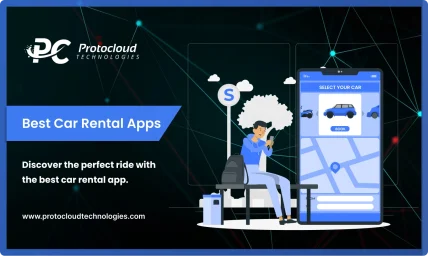
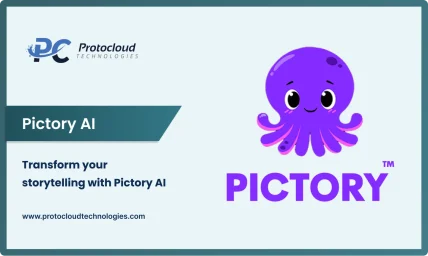


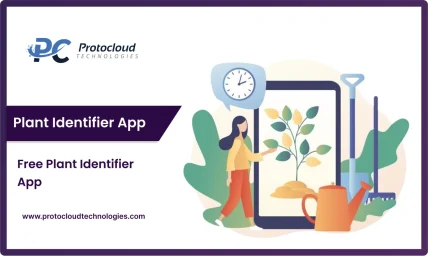

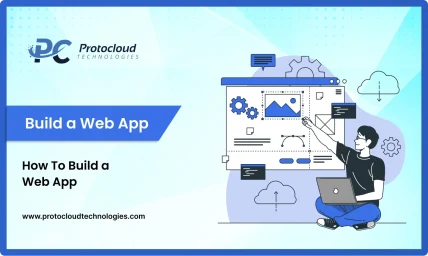
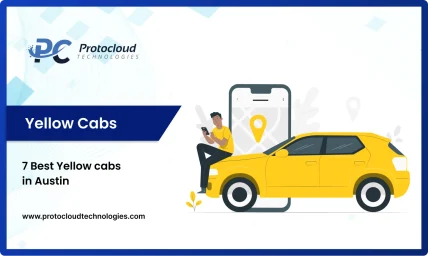
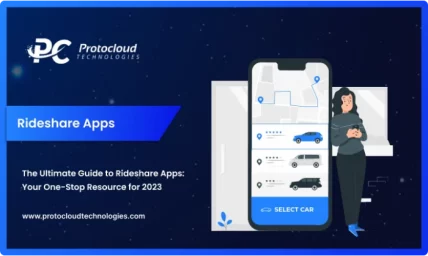




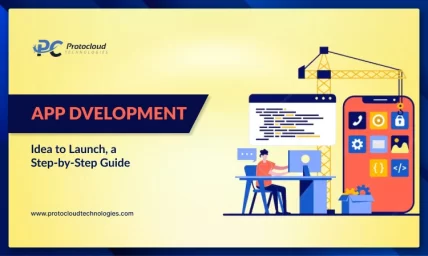
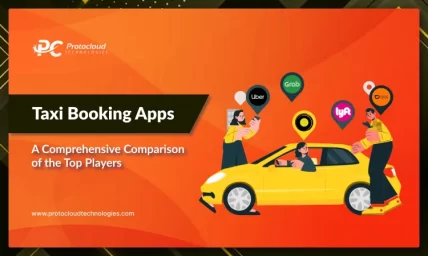

I truly appreciate this post. I¦ve been looking all over for this! Thank goodness I found it on Bing. You’ve made my day! Thanks again
This is an amazing page. The outstanding information reveals the owner’s accountability. I’m in awe and eagerly await more amazing postings like this one.
I loved as much as you’ll receive carried out right here. The sketch is attractive, your authored material stylish. nonetheless, you command get bought an nervousness over that you wish be delivering the following. unwell unquestionably come more formerly again as exactly the same nearly a lot often inside case you shield this hike.
Thanks
This resource is incredible. The wonderful data exhibits the administrator’s earnestness. I’m stunned and expect more such astonishing material.
Ridiculous quest there. What happened after? Good luck!